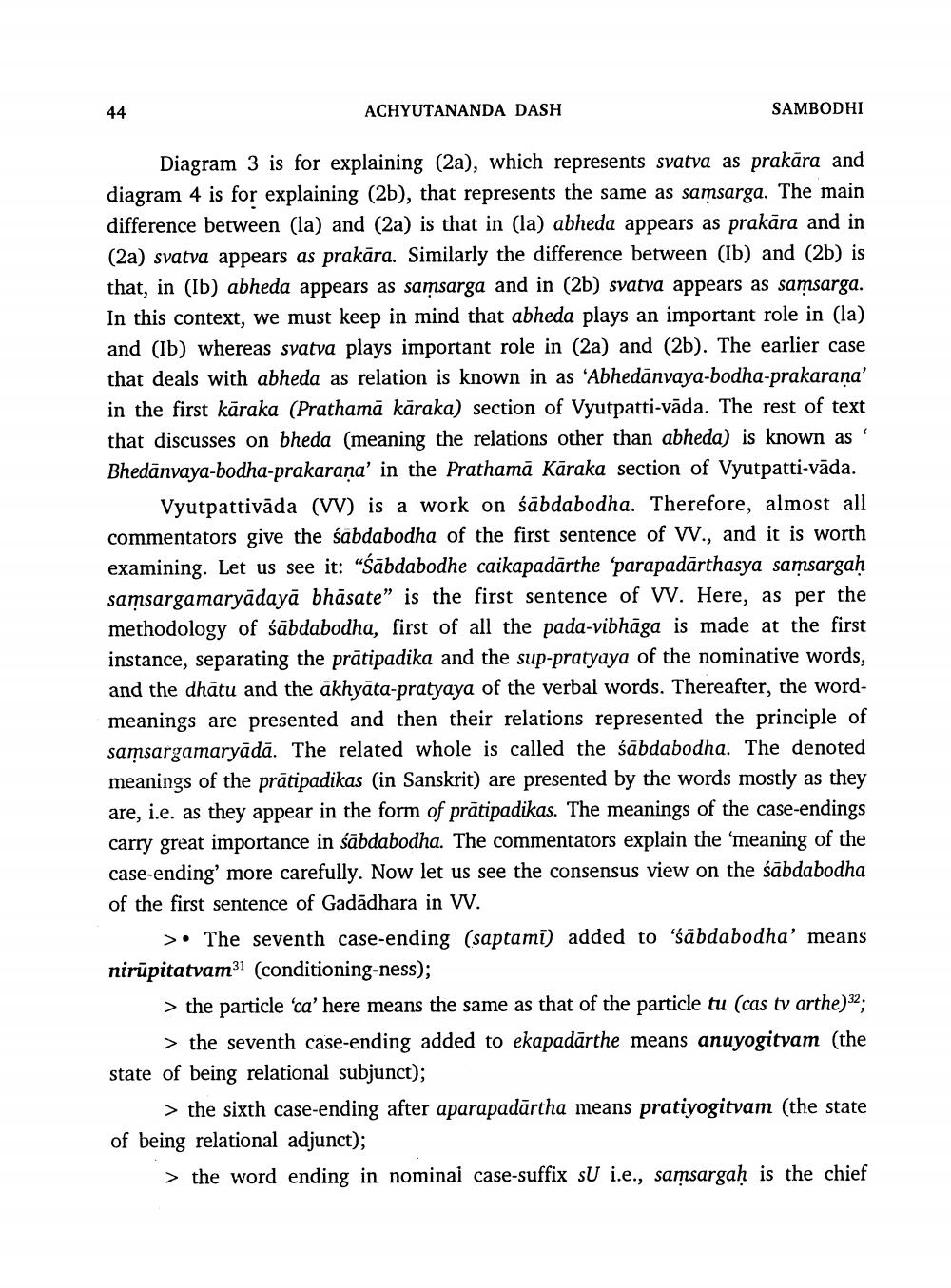________________
ACHYUTANANDA DASH
SAMBODHI
Diagram 3 is for explaining (2a), which represents svatva as prakāra and diagram 4 is for explaining (2b), that represents the same as samsarga. The main difference between (la) and (2a) is that in (la) abheda appears as prakāra and in (2a) svatva appears as prakāra. Similarly the difference between (Ib) and (2b) is that, in (Ib) abheda appears as samsarga and in (2b) svatva appears as samsarga. In this context, we must keep in mind that abheda plays an important role in (la) and (Ib) whereas svatva plays important role in (2a) and (2b). The earlier case that deals with abheda as relation is known in as 'Abhedānvaya-bodha-prakarana' in the first kāraka (Prathamā kāraka) section of Vyutpatti-vāda. The rest of text that discusses on bheda (meaning the relations other than abheda) is known as Bhedānvaya-bodha-prakarana' in the Prathamā Kāraka section of Vyutpatti-vāda.
Vyutpattivāda (W) is a work on śābdabodha. Therefore, almost all commentators give the śābdabodha of the first sentence of W., and it is worth examining. Let us see it: "śābdabodhe caikapadārthe ‘parapadārthasya samsargah samsargamaryādayā bhāsate" is the first sentence of W. Here, as per the methodology of śābdabodha, first of all the pada-vibhāga is made at the first instance, separating the prātipadika and the sup-pratyaya of the nominative words, and the dhātu and the ākhyāta-pratyaya of the verbal words. Thereafter, the wordmeanings are presented and then their relations represented the principle of samsargamaryādā. The related whole is called the śābdabodha. The denoted meanings of the prātipadikas (in Sanskrit) are presented by the words mostly as they are, i.e. as they appear in the form of prātipadikas. The meanings of the case-endings carry great importance in śābdabodha. The commentators explain the 'meaning of the case-ending' more carefully. Now let us see the consensus view on the sābdabodha of the first sentence of Gadādhara in W.
>• The seventh case-ending (saptamī) added to 'śābdabodha' means nirūpitatvam31 (conditioning-ness);
> the particle 'ca' here means the same as that of the particle tu cas tv arthe) 32,
> the seventh case-ending added to ekapadārthe means anuyogitvam (the state of being relational subjunct);
> the sixth case-ending after aparapadārtha means pratiyogitvam (the state of being relational adjunct);
> the word ending in nominal case-suffix su i.e., samsargah is the chief




